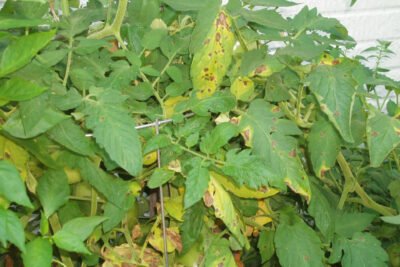
Best Practices for Repotting Your Potted Plants

Somewhere between your third pothos and the day you started naming your succulents, you may have faced a disheartening mystery: a once-lush plant slumping over like a hungover party guest. It’s not pests. It’s not you. And it’s definitely not the moon cycle (though some will swear otherwise). The problem? Your plant has simply outgrown its shoes. It needs a new pot, a better one. A roomier one. One that says: “I see you, and I believe in your photosynthetic potential.”
Welcome to the underappreciated art of repotting: part horticultural science, part psychological therapy, for both plant and human.
- When the Pot Becomes a Prison
- How to Know It's Time (Hint: It’s Not About Astrology)
- What You’ll Need: No Fancy Gadgets, Just a Bit of Foresight
- The Gentle Art of Repotting: A Step-by-Step Drama
- Aftercare: Plants Need Downtime Too
- Avoid These Rookie Mistakes (Even Pros Mess This Up)
- What If You Never Repot?
- The Trick Most Gardeners Miss
- Final Thought: Repotting Isn’t a Chore. It’s a Rescue Mission
When the Pot Becomes a Prison

Contrary to their peaceful demeanor, plants are dramatic creatures. They stretch, sprawl, and devour space in slow motion. One day, they’re cozy. The next, their roots are entangled in a Gordian knot, gasping for nutrients like a marathon runner at mile 25.
Much like teenagers trapped in childhood bedrooms, potted plants begin to rebel when confined too long: they sulk, refuse to grow, and sometimes spiral into decline. Their silent protest can be reversed with one generous gesture: repotting.
New soil. New space. New beginnings.
How to Know It's Time (Hint: It’s Not About Astrology)
There’s no lunar calendar for this, but there are signs; tangible ones:
- Roots peeking out of drainage holes like prisoners through barred windows
- Water that shoots through the pot like it's late for something
- A soil surface drier than your group chat since 2020
- Growth so stagnant you’d think the plant read existentialist philosophy
Spring and early summer are prime time. Plants, like people in warm weather, become a little more optimistic. Take advantage of this seasonal zest.
What You’ll Need: No Fancy Gadgets, Just a Bit of Foresight
Let’s keep it simple. No, you don’t need a $90 gold-plated trowel from a minimalist gardening boutique in Copenhagen. You need:
- A pot 1–2 inches wider than the current one
- Soil matched to the plant’s actual personality (not just its vibe)
- Gloves, if you’re squeamish or fancy
- A trowel, or a spoon if you’re feeling rustic
- Watering can, because hydration is not optional
Drainage holes are non-negotiable. Without them, you’re not repotting; you’re digging a shallow grave.
The Gentle Art of Repotting: A Step-by-Step Drama
Step 1: Extraction, Not Execution
Tilt the pot. Support the base. Coax, don’t yank. If your plant resists, use a knife like a polite kid at a birthday cake, just around the edges.
Step 2: Root Awakening
Once free, examine the root ball. If it looks like a stressed-out wig, loosen it gently. Circular roots? Trim a few. Think of it as root therapy: a bit painful, but ultimately freeing.

Step 3: Groundwork
Add fresh soil to the bottom of the new pot, just enough so your plant sits at its original height. Bury it deeper and you risk stem rot. And nobody wants that.
Step 4: The Grand Reentry
Place the plant in the center, add more soil around it, and press lightly. Not too hard; plants don’t like being suffocated. Leave some room at the top for watering.
Step 5: Water Like You Mean It
Hydrate. Fully. The water settles the soil and soothes those disturbed roots. If the soil collapses, add more. No one likes a sunken throne.
Aftercare: Plants Need Downtime Too
Post-repotting, your plant might look a little... existential. Give it soft light, quiet corners, and zero fertilizer. Like someone recovering from a long-haul flight, it needs time to reorient.
Watch the soil. New mixes hold moisture differently. Adjust your watering, not your commitment.
Avoid These Rookie Mistakes (Even Pros Mess This Up)
- Wrong soil: Cacti in dense loam are like fish in milk. Match the mix.
- Oversized pots: Bigger isn’t better. Too much space equals soggy roots.
- No drainage: If water can’t escape, neither can root rot.
- Early fertilizing: Would you eat a steak right after surgery? Exactly.
What If You Never Repot?
Think of it as leaving your child in a crib until college. Soil degrades. Nutrients vanish. Roots suffocate. Eventually, your plant stops growing, or worse, dies slowly while you wonder if talking to it will help.
(Reader, it won’t. Repotting will.)
The Trick Most Gardeners Miss
Soak the potting mix before you use it. Dry mix can repel water like a duck’s back, leaving roots parched. Moist soil settles better and welcomes roots like an old friend.
Your plant isn’t dying, it’s just begging for a bigger apartment. This video walks you through the dramatic art of repotting, where cramped roots, sad soil, and poor life choices get left behind. New pot, new life. Don’t bury it, rescue it.
Final Thought: Repotting Isn’t a Chore. It’s a Rescue Mission
Repotting isn’t just about giving your plant more space. It’s about offering renewal, rejuvenation, and the chance to become what it was always meant to be: gloriously alive.
So go ahead. Be the liberator your plant didn’t know it needed. And when those first new leaves emerge, you’ll understand, it wasn’t just the plant that got a fresh start.
If you want to see other articles similar to Best Practices for Repotting Your Potted Plants you can visit the category Plant Care.




Leave a Reply